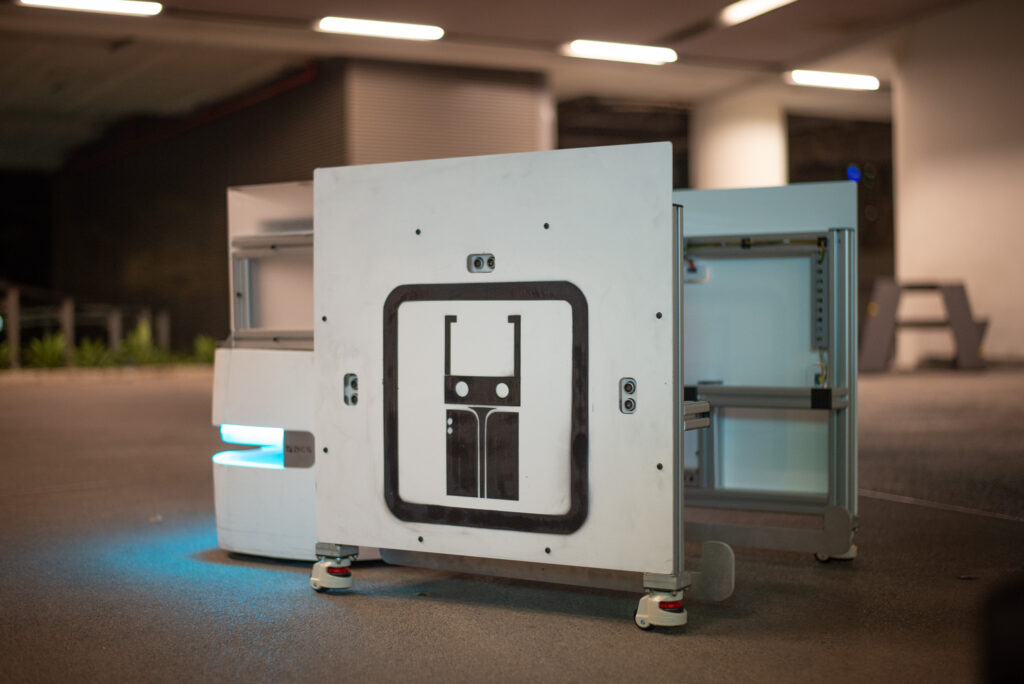
Overview of the Robot
Problem Overview
As one of the world's leading airports, Changi Airport experiences heavy traffic in their transit areas, especially when flights are departing. Due to the high frequency of passengers passing by the transit area, a significant amount of garbage is generated as passengers might throw away bottles of unfinished liquids or other forms of garbage into the garbage bins at Changi Airport's transit area before they board their flights. This creates a problem, as the garbage bags fill up quickly, which could be unsightly and malodorous.
"How might we come up with an automated solution that can work alongside human cleaners to optimize the process of trash bin replacement in the transit area of Changi Airport?"
What is BeetleBot?
BeetleBot is a solution that was designed with the user's needs in mind. BeetleBot comes in 4 parts: the robotic unit for ferrying the bin, a mobile application, a web application and a back-end server.
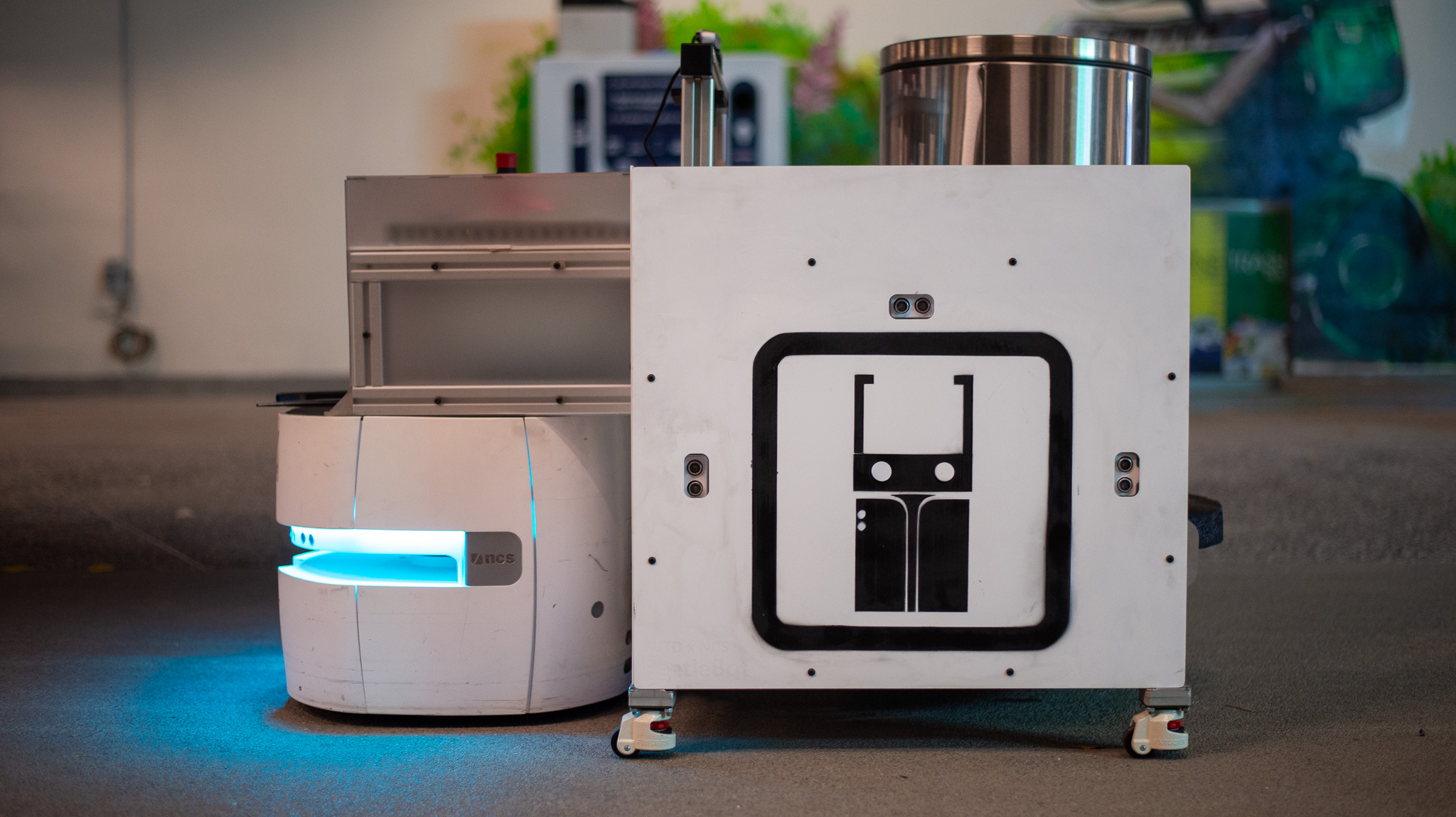
Side View of the Robot

Rear View of the Robot
Robot Workflow
Upon receiving its tasks from the back-end server, the robot would first collect the full bin from the transit area, and drop it off at a specified holding area, where a cleaner would be waiting to replace the trash bags. The robot would then pick up an empty new bin and bring it back to the original position as a replacement. To lift the bin up, a forklift attachment is used which can carry up to 50kg load while moving.
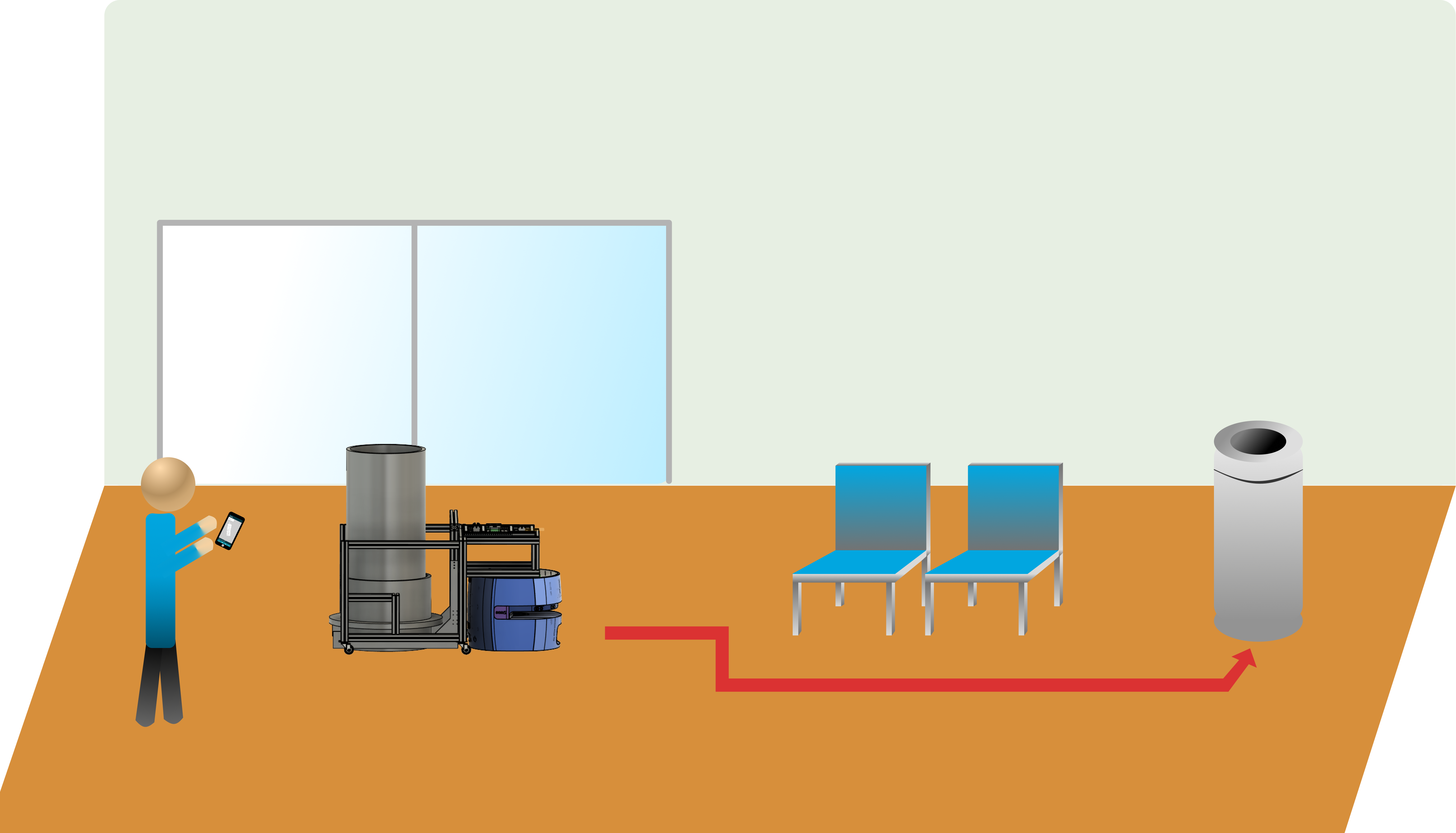

The robot helps to consolidate the trash bins that need to be cleared in one place, reducing the number of cleaners needed for clearing the bins. This opens up more cleaners to attend to tasks that requires a more human touch.
Robotic Unit
Robot Structure
The robotic system is divided into 5 components: the frame, the electronics, the bin adapter, the robot software and the Momentum mobile base. Additional safety protocols were also added to the system due to the proximity of this robot to people during its work. The bin will be put into the bin adapter which will be lifted by the robot using the hook.

Exploded View of the Robotic Unit

NCS Momentum
Momentum & Navibee
Momentum is an indoor mobile base that is compatible with payloads of up to 50kg. It is integrated with Navibee, thus enabling autonomous roaming, people identification, waypoint setting and saving and robot control and monitoring.
Robot Components
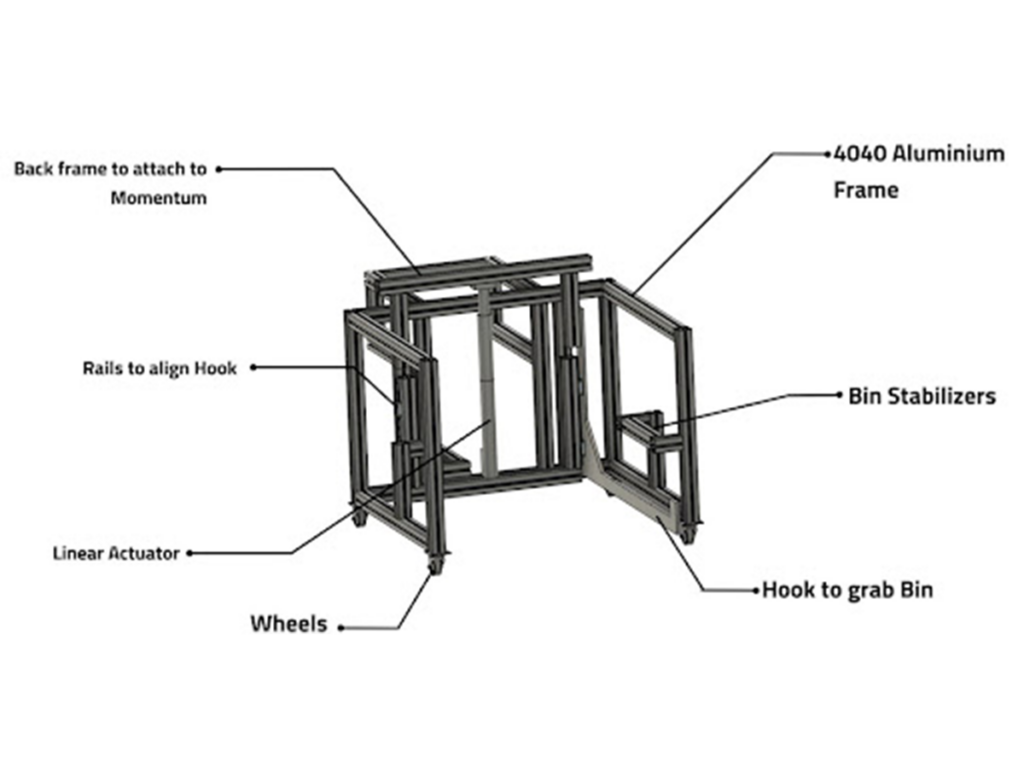
Forklift Attachment
Introducing BeetleBot’s Forklift Attachment, crafted from durable aluminum for reliability and ease of use. Designed for easy assembly and adaptable to various bin sizes, it features omni-directional latching and integrated stabilizers for efficient and secure handling of trash bins.

Bin Adapter
BeetleBot’s bin adapter works in hand with the forklift attachment by retrofitting bins for easy pickup and secure carrying. With its circular design, the adapter enables the robot to latch onto bins from any angle, eliminating the need for precise alignment. Engineered for versatility, our adapter can be easily manufactured to fit different bin sizes, ensuring compatibility across various applications.
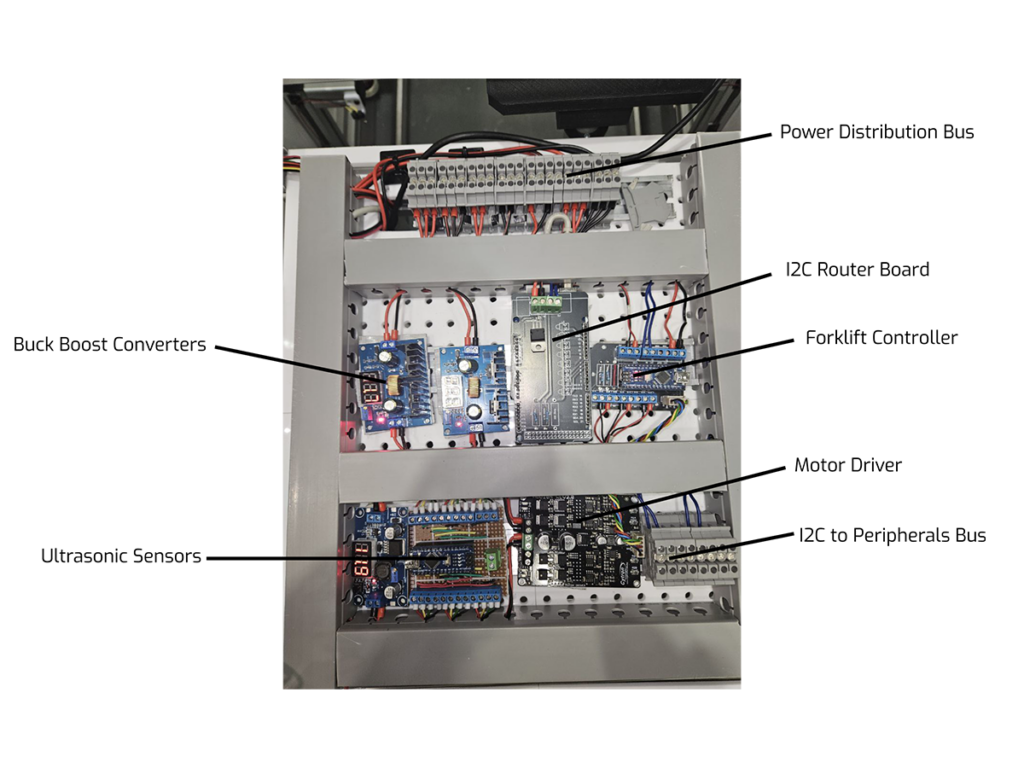
Electrical System
BeetleBot's electrical system efficiently manages power distribution, seamlessly connecting sensors and controlling the lifting mechanism. Microcontrollers handle inputs and lift operations, while a unique messaging protocol ensures smooth communication with the robot's software.
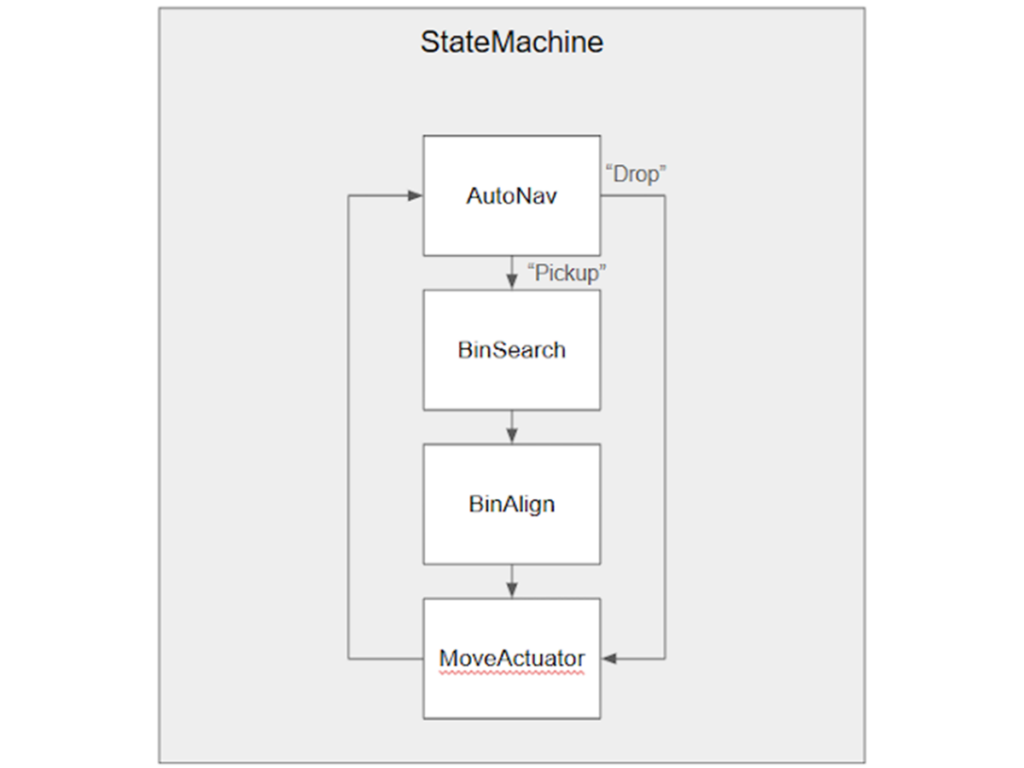
Robot Software
Our robot, equipped with a Raspberry Pi onboard, employs an algorithm to efficiently locate bins. Bins are automatically assigned to the robots, and once a robot receives its task, it will employ a specialized algorithm to autonomously navigate and align itself with the bin in order to carry the bin back to the holding area.
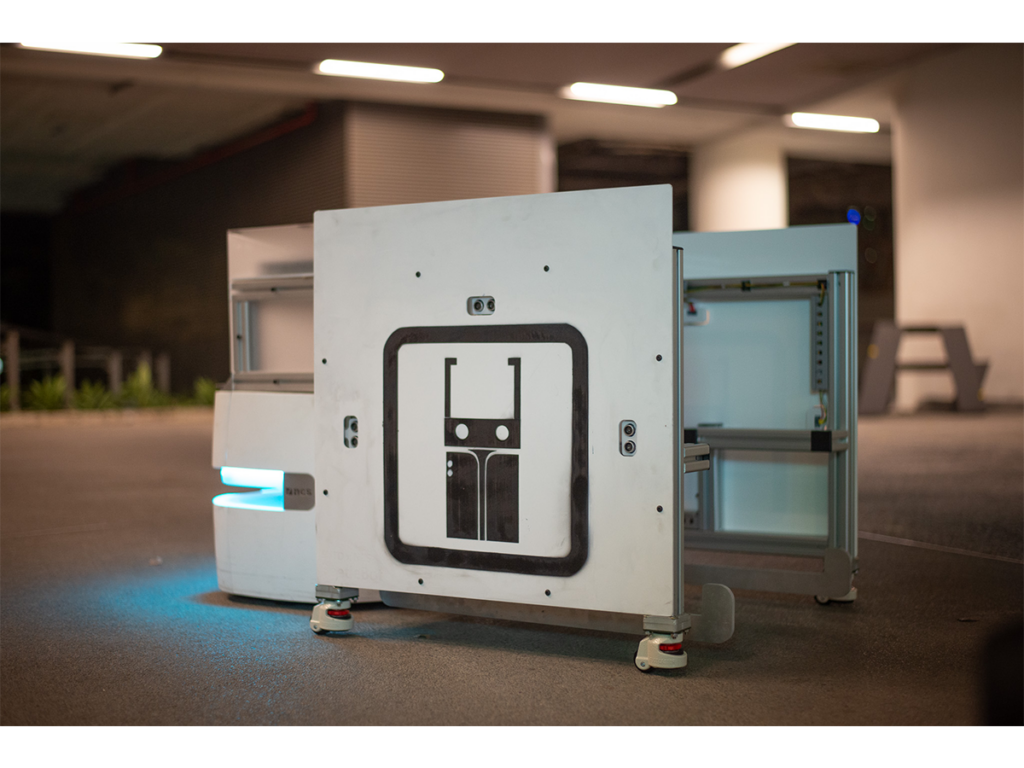
Safety Features and Protocols
To enhance safety in Changi Airport's busy terminals, BeetleBot is equipped with ultrasonic sensors. These detect obstacles, triggering a safety stop until the path is clear. Additionally, an Emergency Stop button allows for quick halting of operations during emergencies.

Outer Panel
To enhance BeetleBot's safety and appearance, we've added a sleek outer panel made from laser-cut acrylic sheets. These panels fit snugly and include a hinged top for easy access to electronics. This design prevents risks like children's hands getting caught and liquid spills, while also enhancing BeetleBot's visual appeal.
Software Services
Mobile Application
The mobile application would allow site supervisors to monitor the robots’ live locations and receive notifications about the robots’ statuses through the information sent by the robot in the back-end server.

Login and Authentication
Users are prompted to login to their accounts upon accessing the application. Following successful authentication, they are automatically redirected to the homepage.
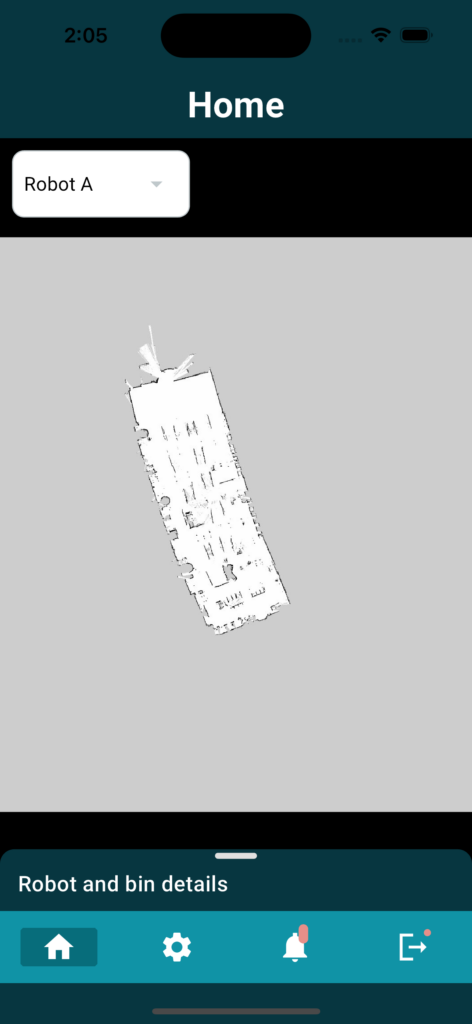
Real-time Monitoring
The homepage offers a detailed overview of bins and robots, providing insights into ongoing operations. Users can select a robot from a dropdown menu to see its location on an interactive map. They can also zoom in to get a better view of the robot's current location.

Notifications for Failures and Updates
Users will be alerted when a robot runs into problems through phone notifications. Unresolved alerts will be displayed in the alerts page.
Web Application
The web application would be used by the cleaner managers, where the managers have access to a dashboard which displays key metrics about the robots’ performance, allowing the managers to distill insights about potential bottlenecks and provide timely maintenance.

Robot Performance Dashboard
The robot performance dashboard helps to break down the robot’s performance by providing key metrics such as the number of trips each robot has done in order to help the managers quickly analyze and look out for bottlenecks and provide timely maintenance to the robots to prevent delays due to malfunctions.

User Authentication & Access Control
The users will authenticate their credentials via a combination of Supabase and our team’s back-end server. For user management, only the manager accounts are allowed to add and remove users for both the web and mobile application. Users can add users by batch or individually, as well as select multiple users for deletion.












